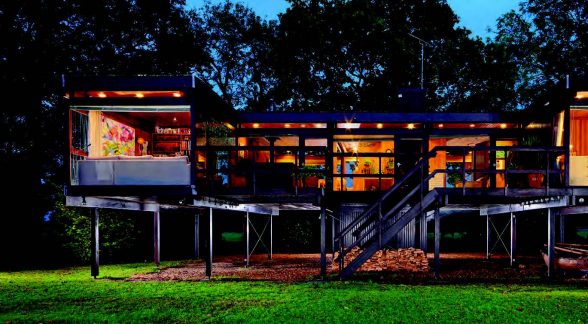This website uses cookies
This website uses cookies to enable it to function properly and to analyse how the website is used. Please click 'Close' to accept and continue using the website.


The Buildings of England: Sussex West
Elizabeth Williamson, Tim Hudson, Jeremy Musson and Ian Nairn (Yale University Press, 908pp, £45)
Reviewed by Simon Warnaby

Yale University Press
The small-format 1965 edition (covering both West and East Sussex) was written by Ian Nairn and Nikolaus Pevsner. This new volume is vastly expanded, and, with a wealth of new information, it is an indulgent pleasure to revisit familiar places and make new discoveries.
As the introduction makes clear, a significant part of the county’s 20th century story is the development of Crawley New Town – the first New Town around London. There is a reproduction of the 1946 masterplan and a town map, but the town ‘does not have the distinction of Harlow’, and there is no illustration of any building. One building that does stand out is the Town Hall (1961), the work of Max Glendinning, with ‘the sleek details of the stainless steel main staircase’ and ‘the impressive, but unintimidating, Council Chamber, high and brightly lit’. The building is now unfashionable, unloved and mauled: in fact the plan is for it to be demolished imminently. C20 Society made a case for listing, but Historic England took the view that, although it was one of the few New Town town halls remaining and was not without some architectural quality, it did not have sufficient interest to merit listing at a national level.
The plan is to replace it with a commercial development of 182 flats, a ninestorey building with commercial offices and a town hall! 20th century residential development is particularly dense along the coast, and numerous examples are discussed. One from the inter-war period is the fantasy vernacular revival at Bailiffscourt (1935) by Amyas Phillips – the only post-1914 building in West Sussex to be illustrated in the first edition. It presented a moral problem for Nairn, who concluded that ‘one can only lie back and enjoy it’.
Contrast this with another fantasy of a different kind, Monkton House, a Lutyens ‘Trianon’ of 1902–03 transformed (1935–39) into an ‘astonishing Surrealist style, unique in Britain’ with advice from Salvador Dali. Nairn said that ‘a weakly genteel neo-Georgian brick box’ had fortunately ‘been well and truly submerged in an extraordinary redecoration’. There are examples of modernist houses which stand out for Nairn, such as Sea Lane House in East.
Preston (Marcel Breuer, 1936–37). Nairn commented in his introduction about the condition of the modernist houses, with ‘their concrete blotched and stained’. The new edition highlights the threat of detrimental changes, exemplified at Aldwick Bay where the Beach House (1933–34) by Tecton is ‘now hardly recognisable’. Some changes seem to have been more sensitively carried out, such as at Bosham, where the Sorrell House (1960) by Peter Foggo and David Thomas (not in the first edition) has had two additions. An example of a recent new house at Terwick by Trevor Dannatt, a past president of the Society, is described as ‘very carefully modelled and textured, giving a C21 twist on an Arts and Crafts sensibility’.
At the Weald and Downland Living Museum in Singleton (founded in 1967) the Gridshell building (2000–01) by Edward Cullinan and Buro Happold turns out to be a pioneering building – the first double-layered timber gridshell in the UK, with ‘one breathtaking space’ inside, and made possible with money from the Heritage Lottery Fund. On the Goodwood estate, the racecourse has two playful stands, the 1980 March Stand by Lobb Partnership and Philip Dowson, described as a giant sun-visor, and the 1990 Sussex Stand of 1990 by Arup Associates. On the estate there is the surprising and incongruous factory for Rolls Royce (2001–03) by Nicholas Grimshaw, a ‘stunning intervention’ cleverly inserted into old gravel workings.
The introduction suggests that Nairn would have been ‘outraged… about the scale, casualness and abysmal quality of much development since 1965’, but ‘Nevertheless, good and thoughtful design can still be found in places, and expertly conserved historic fabric everywhere.’ The engineering that saved the baroque chapel ceiling at Petworth House from collapse, and the compartmentation of the roof space to give better fire protection, typify the little-known and largely unseen conservation work done by so many architects and engineers.
We are still populating our book review section. You will be able to search by book name, author or date of publication.

Become a C20 member today and help save our modern design heritage.